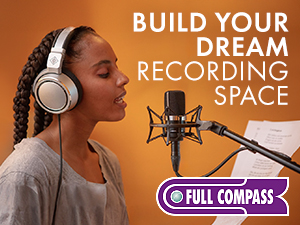|
Part 3
Digital Audio Jargon - How MP3
Files Deliver Your Audio To Clients
 By William Williams By William WilliamsVoice Actor & Coach
Aliso Creek Productions
So now you have this gi-normous file that you need to send to your client.
How do you do this? If the file is relatively small, you can compress it into an mp3 file and send via an email.
Or, if the files are larger or more numerous, you can upload the files to the client's server via FTP.
Here in Part 3 of our Digital Audio Jargon series, we explain the mp3 method. FTP is discussed in Part 4.
MP3 DELIVERY
If the file you need to send is short, say a few minutes long, you can compress the file from a WAV or AIFF file into an mp3 file. This will reduce the file size without any perceptable deteriation of the sound quality.
For example, using a 128k bit rate, a WAV file will be compressed almost 6 to 1.
WHAT CLIENTS WANT
There are four parameters the client can ask for when they specify the mp3 format for the final product. These are:
SAMPLE RATE & FORMAT
The first two parameters are usually set when you initially record the audio, since most programs record using a compressionless PCM (aiff or wav) format.
So when you begin the project, set these parameters to 16 bit, 44.1 kilohertz.
SELECT MONO
The second two parameters are set when you actually export the files as mp3s. You want to select mono because the tracks you record should be mono. You only have one mouth and you use one mic, so the recordings are mono.
If you select stereo the file will create two identical left and right tracks from the mono file, thus doubling the file size.
Also, the client will have to convert it back to mono when they use it.
BIT RATE
The final parameter - bit rate - is often specified by the customer. Lower bit rates make smaller files, but also make noisier audio. In order to reduce the file size, some data has to be discarded - and the more you discard the more the sound suffers . And you can't get the data back once it's discarded.
TOO BAD ...
So if it sounds bad, you can't make it sound better.
This is called LOSS-Y compression. It's like running a picture through a copier. The copy is not as clear as the original.
HIGHER BITS BETTER
Higher bit rates make larger files and make cleaner audio. So when you pick a bit rate, pick the highest bit rate you can as long as you can still email it. The minimum I'll use is 128k. I routinely use 192k.
Bit rates higher than 192k don't really improve the sound quality that much, but result in much larger files.
So unless the customer requests a higher bit rate, 192k is the highest I go. 192k will give you about 4-to-1 compression.
In other words, the mp3 files will be four times smaller.
WHEN IT'S BIGGER ..
By the way, when the bit rates get up to 256k the file sizes are so close to uncompressed files that you might as well send WAV or AIFF files. The settings for mp3 conversion are often found in the "preferences" menu of the recording software that you're using. Any files under about 10 megabytes can probably be emailed without being kicked back by the client's Internet service provider or clogging up the clients mailbox.
If you have several files that are 5 megabytes or so, you might want to send each in a seperate email.
Anything bigger than that ... you'll need to use FTP file delivery.
ABOUT WILLIAM ...
William Williams is a voice over talent with national, regional and local credits. He has also been a voice over coach in Los Angeles for 15 years where he teaches regular classes, does private coaching, and produces voice over demos at Aliso Creek Productions, in Burbank. He also offers online voice-over classes and coaching.
Email: william@alisocreek.net
Online voice-over classes: http://onlinevoiceoverclasses.com
... Low Prices ... Speedy Delivery!
|
Inspiring interviews help your VO career
For essential voice-over business strategies
On Michael Langsner's Voice-Over Roadmap Podcast
With Sean Daeley and Paul Stefano - check it out!
As of the NEW website launch, 03/22/2012






.png)



Thanks for "doing the math" on this one! A great post! I'm changing my Adobe Audition settings before my next recording session!